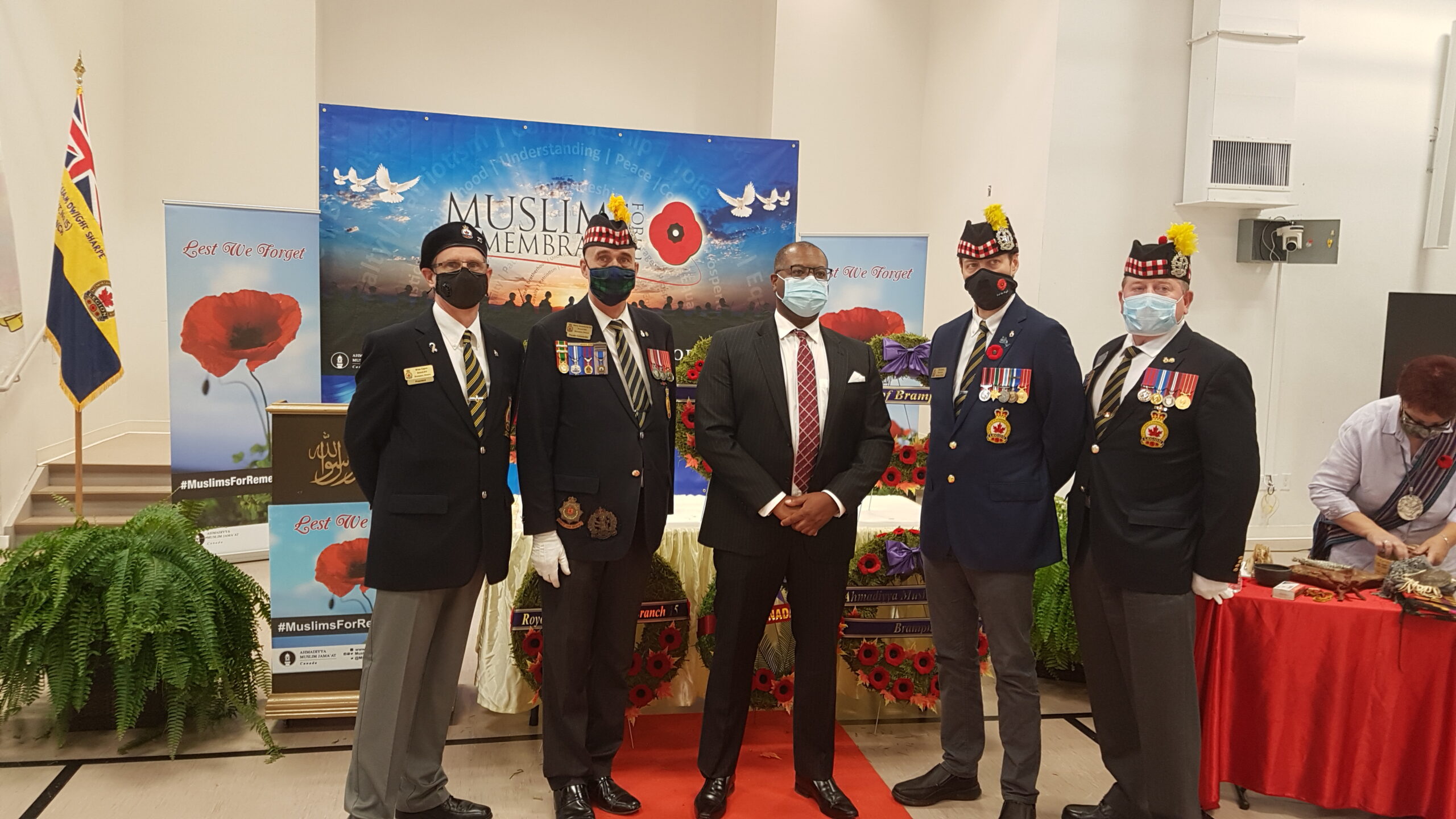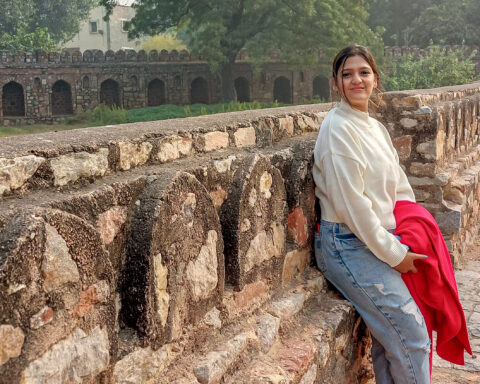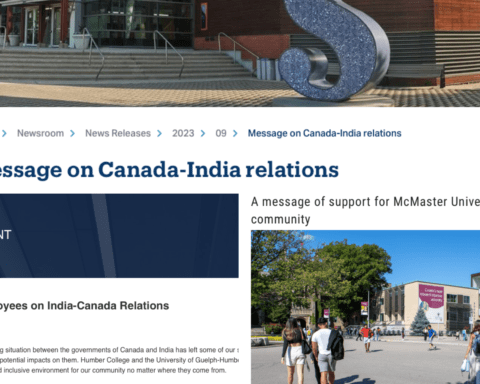Brampton’s Mubarak Mosque was the scene of something unique on Nov. 8. The house of worship is part of the Ahmadiyya Muslim Jama’at (congregation). The Ahmadiyyas are a sub-sect of Islam that came about in the late 19th century in the Indian city of Qadian. In their Brampton mosque, they hosted the Royal Canadian Legion and together they put on a Remembrance Day ceremony.
“We believe in giving back to the community. That is why we, on every occasion, we do connect with other organizations just to build a relationship,” said Missionary, Shahrukh Rizwan Abid, a preacher at the Mubarak Mosque. Several members of the mosque have lived in Canada for years, however a large portion of the congregation are newcomers who might be bewildered by their new surroundings. Rizwan Abid also sees Canadian traditions such as Remembrance Day as a great way to help integrate immigrants into the larger Canadian society. The 11th hour, of the 11th day of the 11th month is to hime a way to “help a lot of people understand what Canada is.”
Following alongside Rizwan Abid is the parade commander, Henry Verschuren of Branch 15 of the Legion, located in downtown Brampton. He saw an opportunity for partnership with the mosque and took steps to embed each other deeper in the community. Verschuren recalled seeing a group of South Asian veterans during one ceremony and asked them to join in the day’s parade. It turned out they were from the Mubarak Mosque. Slowly but surely, a relationship developed. “They approached us,” Verschuren said. “Last year, that was the first [joint Remembrance Day],” he said. “When we sit down and meet to plan out the remembrance services, they’re asking my advice, they’re asking for advice from the legion on how to do it and what are the traditions,” Verschuren added.
The Royal Canadian Legion has been around for 95 years and is a cultural touchstone in Canada. They have provided welfare and a sense of community to veterans as well their families. They are inextricably married to one of Canada’s most sacred traditions, the act of remembering those who served to keep Canada free. The Ahmadiyya Jama’at is deeply oriented towards the community. Their mosque in Brampton have implemented supports for the elderly isolated by the COVID-19 pandemic as well as organized poppy drives. So the alliance was only natural. “It’s part of their faith that you do work for the community,” Verschuren said. Both men agree that Remembrance Day can be a way to help alleviate the culture shock of Canada to newcomers.
Outreach to visible minorities
The City of Brampton has similar goals with their Brampton Remembers event, where they honour Bramptonians who are currently serving and have served in the past. “Brampton is a Mosaic and we celebrate our diversity. Through engagement and communication with all groups, we foster a holistic approach to inclusion with great respect for each and every individual who calls Brampton home,” said an emailed statement by the City.
Roughly 73 percent of Brampton’s population consists of visible minorities and just over half of the city’s population was born outside of Canada. Integration into and education about the Canadian way of life is of importance to legacy cultural organizations such as the Legion as well as governments like the City of Brampton.
“[We] communicate through mainstream and multilingual publications, and on social media channels. We also translate our releases in Brampton’s top 10 languages plus French, and share these with multilingual media outlets.” the City of Brampton’s statement said.
Around this time last year, hockey icon Don Cherry was fired by the Sportnets for making disparaging remarks about immigrants not buying poppies. Henry Verschuren rejected those comments and believes “he was dead wrong. My thought was, ‘come to Brampton. We’ll show you what immigrants do. And come see my regiment. Come to the Lorne Scots and you’ll see a lot of first-generation Canadians.” The Lorne Scots (Peel, Dufferin and Halton Regiment) is a Canadian army reserve regiment with companies in Brampton, Oakville and Georgetown. Verschuren used to be a member and is now part of their regimental association, an arm of the main unit specializing in community events and support for members.
Visible minority immigrants serving in the Canadian Armed Forces is nothing new. Private Buckam Singh served Canada in WW1. For more than 100 years, his contributions were not known by Canadian society at large. His grave can be found in Mount Hope cemetery in Kitchener Ont., and it was here that members of the Canadian Armed Forces, especially Sikh members, paid tribute to him. More modern members include Cpl. Christopher Varga, also from the Lorne Scots. He has served in Afghanistan.
The Trudeau government also undertook a review beginning in 2018 to look at ways to attract foreign recruits into the Canadian army. More specifically, the requirement that recruits be Canadian citizens. In the US military, it is not required to be a citizen and some countries, like France, see military service through the French Foreign Legion as a pathway to citizenship.
Mansoor Tanweer is New Canadian Media’s Local Journalism Initiative reporter on immigration policy. An immigrant himself, he has covered municipal affairs and the Brampton City Council in addition to issues relating to newcomers over several years.





